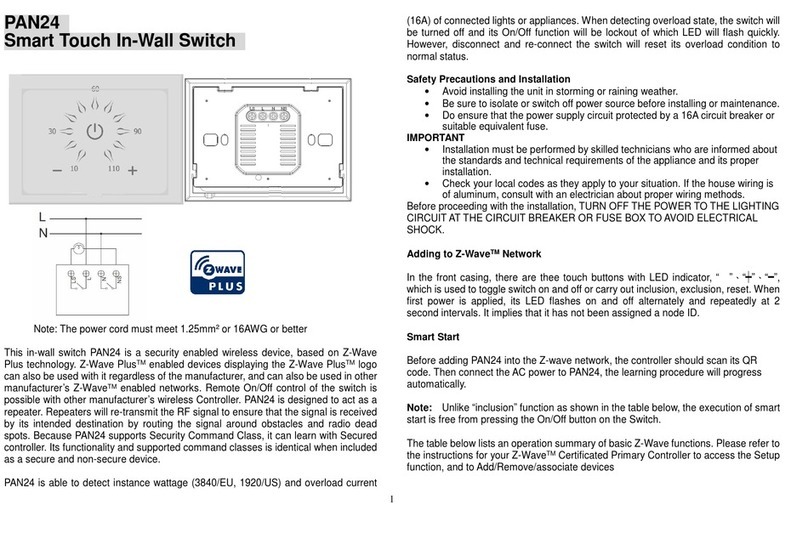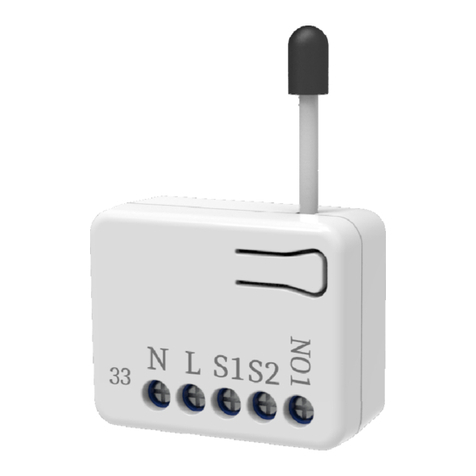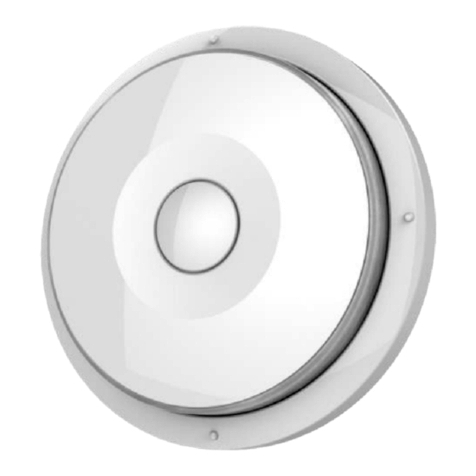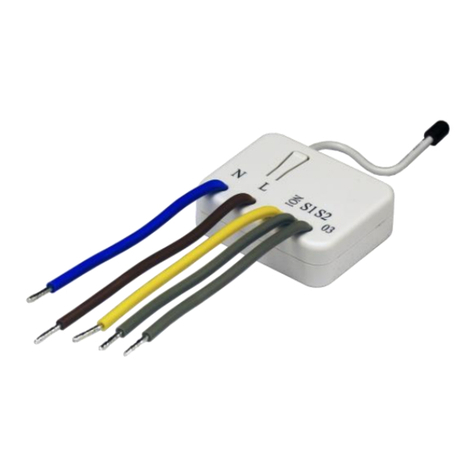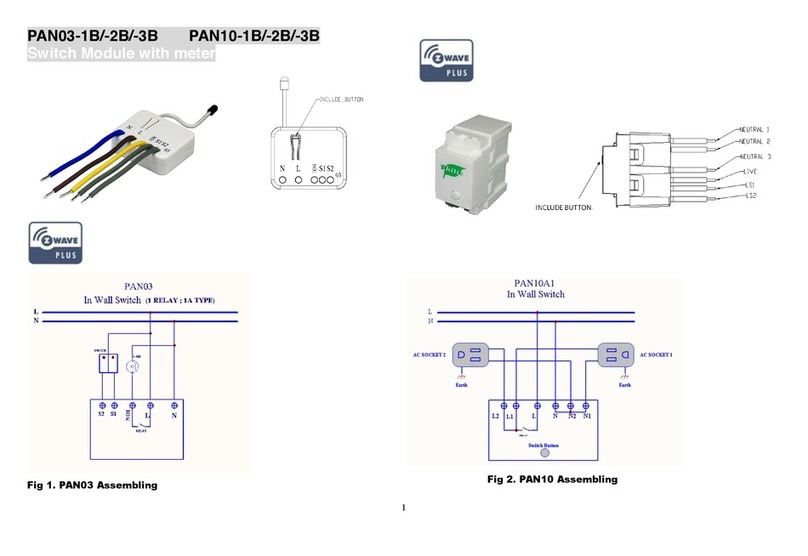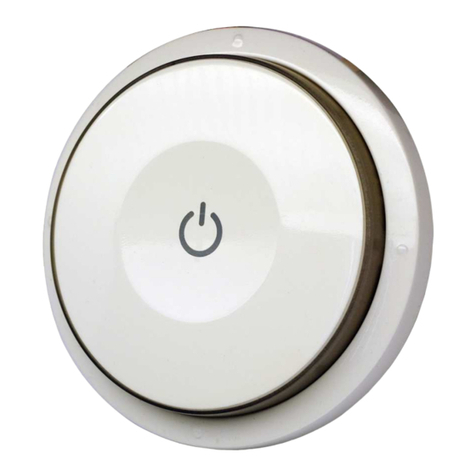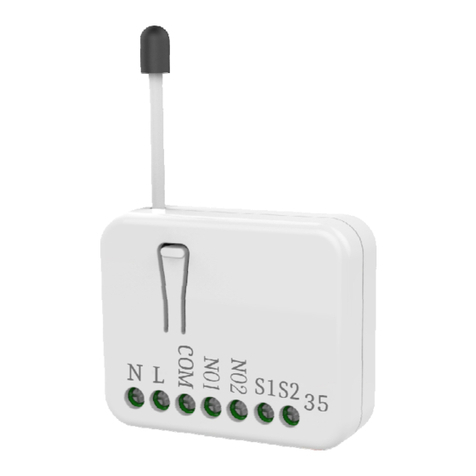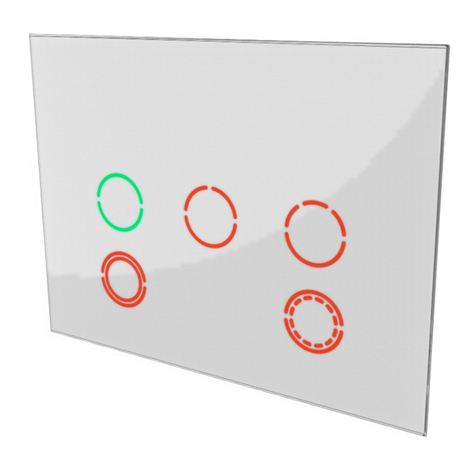This is a warning when the K h of load over the preset threshold value, if the
setting value is 10000, when the Accumulated Power Consumption of Relay1
over this value, PAN10 will send K H meter report to warn the Group1 node,
minimum value is 1K h and default value is 10000 k h.
3-5 Restore switch state mode:
henever the AC power return from lost, PAN10 will restore the switch state
which could be S ITCH OFF LAST S ITCH STATE S ITCH ON. The default
setting is LAST S ITCH STATE.
3-6 Manual On/Off Mode:
The On/Off function of learn switch can be disabled or enabled by this parameter,
default value is Enable. But the learning operation won’t be affected. hen man-
ual On/Off function is disabled, the RF command can only switch On but not Off.
This is useful function for keeping the device in switch on state.
3-7 LED indication mode:
3-7-1 Show Switch State:hen switch is on, LED is on. hen switch is off, LED
is off. The default setting is Show Switch State.
3-7-2 Show Night mode:hen switch is on, LED is off. hen switch is off, LED
is on.
3-7-3 One Flash mode:hen the state of switch changes, LED will be on only
one second, then LED keeps off.
3-8 Auto off timer:
henever PAN10 switches to on, the auto off timer begin to count down. After the
timer decrease to zero, it will switch to off automatically. However if Auto off timer
is set as 0, the auto off function will be disabled. The default setting is 0.
3-9 RF off command mode
henever a switch off command, BASIC_SET BINARY_S ITCH_SET
S ITCH_ALL_OFF, is received, it could be interpreted as 4 variety of commands.
3-9-1 Switch Off:It switches to OFF state. The default setting is Switch Off.
3-9-2 Ignore:The switch off command will be ignored.
3-9-3 Switch Toggle:It switches to the inverse of current state.
3-9-4 Switch On:It switches to ON state.
3-10 Manual Switch Report mode :
henever PAN10 is manually switch on or off, it will send BINARY_S ITCH_
REPORT to the node of group1. The default setting is Enable the function.
3-11 att differential report mode :
3-11-1 Disable : The function of att differential report will be disabled.
3-11-2 5% : hen the differential value of att is over 5%, PAN10 will send
a meter report to the associated group.
3-11-3 10% : hen the differential value of att is over 10%, PAN10 will
send a meter report to the associated group.
3-11-4 15% : hen the differential value of att is over 15%, PAN10 will
send a meter report to the associated group.
3-11-5 20% : hen the differential value of att is over 20%, PAN10 will
send a meter report to the associated group.
4. Protection Command Classes
PAN10 supports Protection Command Class version 2, it can protect the switch
against unintentionally control by e.g. a child. And it can also protect the switch from
being turned off by setting it in “No RF Control” state.
After being set to “Protection by sequence” state, any intentional pressing of On/Off
button should be hold longer than 1 second, or the switch state will not change.
However, the operation of learn function does not change, because learning will not
be protected.
10












